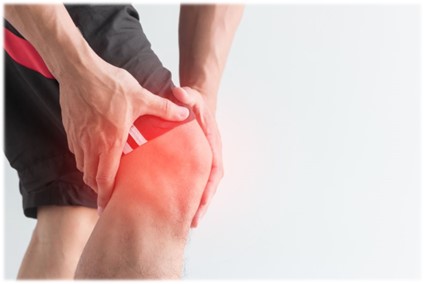

Knee pain is a common problem that leads many people to seek osteopathic treatment. This pain can come from various conditions like tendinitis, osteoarthritis, or patellofemoral syndrome. As osteopathic practitioners, we don’t just look at the knee itself; we consider how different parts of the body work together. The lower limb works like a complex pulley system, with the hips playing a crucial role in movement and balance. By understanding these connections, we can effectively diagnose and treat the root causes of knee pain.
In osteopathy, we see the body’s limbs like engineers see pulley systems. We focus on how different parts pull and rotate. For the lower limb, the hip bones act as central hubs, supporting weight and allowing movement. The thigh bone (femur) rotates at the hip, with muscles working to create a balance of movement and stability.
Usually, there is a 60/40 balance between the back and front muscles. However, if the hip bones don’t move properly, it can disrupt this balance and cause issues in the lower limb, especially the knee.
Restrictions in hip movement can happen due to problems higher up in the body, like an unevenly loaded lower back. This can tilt the pelvis, causing shifts in the hips. These misalignments affect the muscles and joints down to the knee, creating forces that lead to knee pain.
A common pattern is when the lower back bends to one side and rotates to the opposite side, causing one hip to move forward and the other backward. This shows the osteopathic idea that “the knee is not the knee,” meaning knee pain often comes from issues elsewhere in the body.
To treat knee pain effectively, we need to understand the whole body’s mechanics. It’s not enough to just address the symptoms at the knee; we must find and treat the root causes. This holistic approach looks at the body globally, locally, and focally.
In osteopathy, the phrase “global, local, focal” is key to understanding how we approach treatment. First, we look at the global pattern, which involves the overall body collective mechanics. This is because everyone has a primary pattern that creates uneven stress throughout the body. Addressing this global pattern is crucial because if it’s not dealt with, other issues can’t be effectively treated.
After the global pattern is neutralized, we move on to the local pattern, focusing on specific areas of tension. Finally, we address the focal pattern, targeting precise points dysfunction. This approach is like clearing smoke to find the fire—it ensures we treat the root causes, not just the symptoms.
Large muscles and major joints often create strain on smaller muscles and tissues, so we must address these first. By removing the primary sources of stress, we allow the body to regulate itself more effectively, leading to better long-term health and adaptability.
When we find a problem in the knee, we also look at how the rest of the body is compensating. By tracing these issues up and down the body, we can break the cycle of pain and provide long-term relief.
Effective osteopathic treatment follows a logical sequence based on what we find during the examination. This approach allows us to measure our treatment’s effectiveness and adjust as needed. By treating the body as a whole, we can prioritize issues and develop a treatment plan that addresses the root causes of pain.
For example, if knee pain isn’t due to direct injury, it’s often because of issues in the lower back or hips causing stress on the knee. By identifying and treating these primary problems, we can alleviate knee pain more effectively.
Knee pain is rarely an isolated issue. As osteopathic practitioners, we must look beyond the knee to understand the complex forces at play in the body. By adopting a holistic, integrative approach, we can provide more effective relief and address the underlying causes of pain.
If you are experiencing knee pain, consider seeking an osteopathic evaluation. Our approach focuses on understanding the whole body and how different areas influence each other, ensuring that we treat not just the symptoms but the root causes of your discomfort.
We strive to provide any information about Our Clinic, Treatments, Experience and Well-Being that may help our clients achieve their full health potential.
Enter Your Email Above To Receive Last Minute Appointment Notifications, Clinic News & More!
We are still open!
REMINDER: Masks need to be worn to your massage appointments, and must be worn throughout your visit to the clinic.
Please wash or sanitize your hands upon arriving at the clinic, as well as after your treatment.
Thank you,
Clinic Staff.